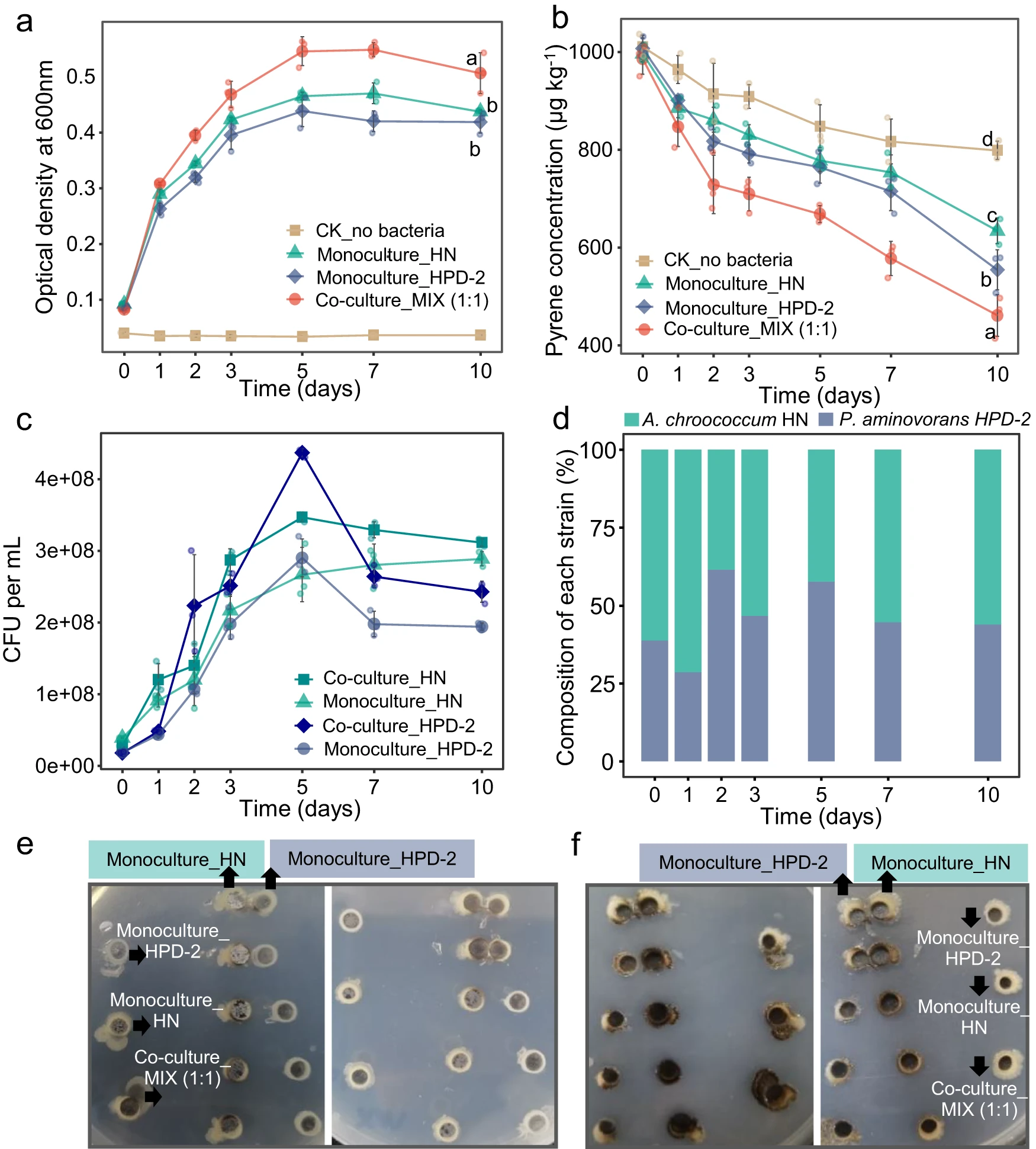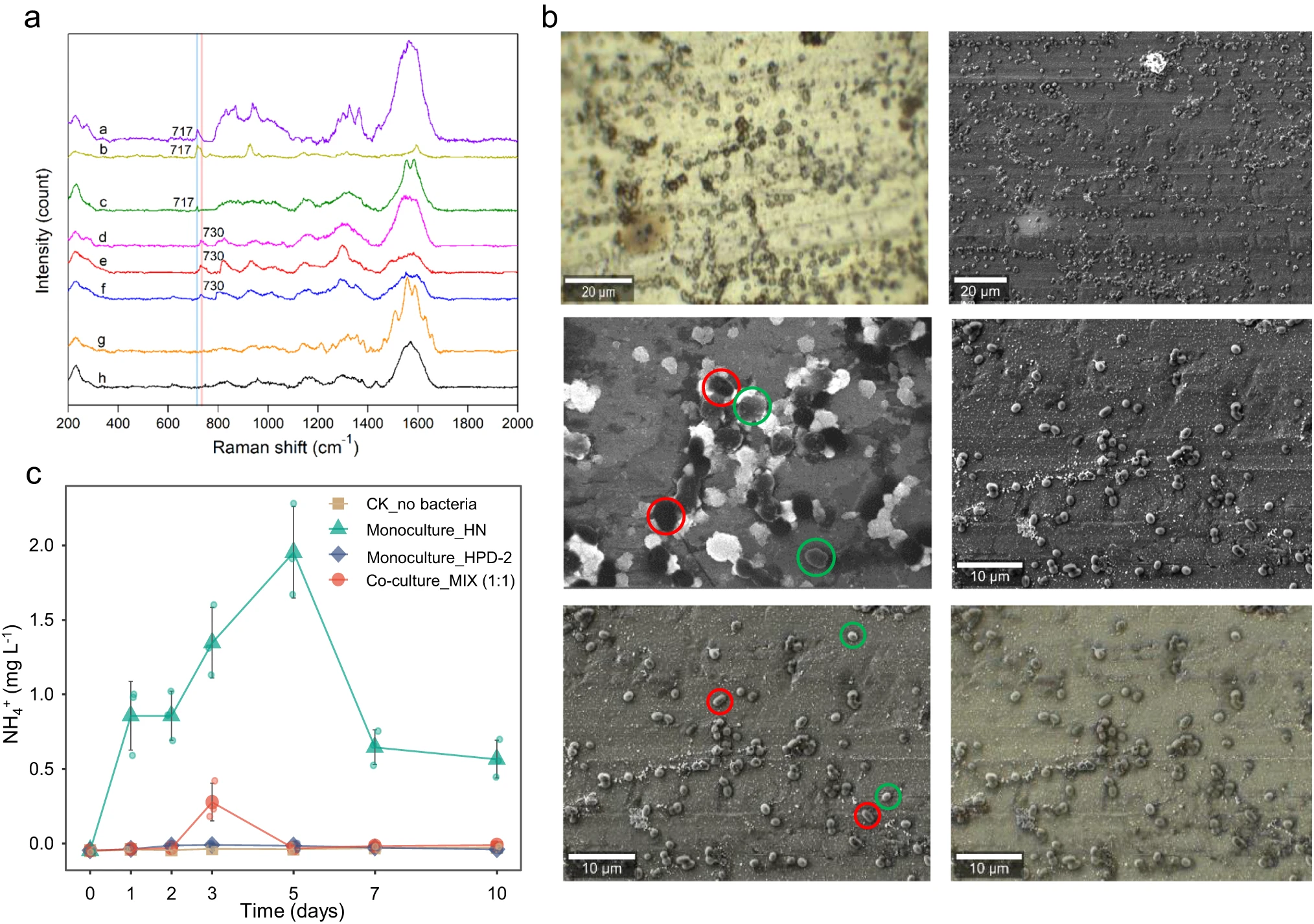Nitrogen transfer and cross-feeding between Azotobacter chroococcum and Paracoccus aminovorans promotes pyrene degradation
Nitrogen is a limiting nutrient for degraders function in hydrocarbon-contaminated environments. Biological nitrogen fixation by diazotrophs is a natural solution for supplying bioavailable nitrogen. Here, Prof. LUO Yongming and his team from the Institute of Soil Science, CAS, determined whether the diazotroph Azotobacter chroococcum HN can provide nitrogen to the polycyclic aromatic hydrocarbon-degrading bacterium Paracoccus aminovorans HPD-2 and further explored the synergistic interactions that facilitate pyrene degradation in nitrogen-deprived environments. They found that A. chroococcum HN and P. aminovorans HPD-2 grew and degraded pyrene more quickly in co-culture than in monoculture. Surface-enhanced Raman spectroscopy combined with 15N stable isotope probing (SERS - 15N SIP) demonstrated that A. chroococcum HN provided nitrogen to P. aminovorans HPD-2. Metabolite analysis and feeding experiments confirmed that cross-feeding occurred between A. chroococcum HN and P. aminovorans HPD-2 during pyrene degradation. Transcriptomic and metabolomic analyses further revealed that co-culture significantly upregulated key pathways such as nitrogen fixation, aromatic compound degradation, protein export, and the TCA cycle in A. chroococcum HN and quorum sensing, aromatic compound degradation and ABC transporters in P. aminovorans HPD-2. Phenotypic and fluorescence in situ hybridization (FISH) assays demonstrated that A. chroococcum HN produced large amounts of biofilm and was located at the bottom of the biofilm in co-culture, whereas P. aminovorans HPD-2 attached to the surface layer and formed a bridge-like structure with A. chroococcum HN. This study demonstrates that distinct syntrophic interactions occur between A. chroococcum HN and P. aminovorans HPD-2 and provides support for their combined use in organic pollutant degradation in nitrogen-deprived environments.
Fig1. Growth and pyrene degradation curves of A. chroococcum HN and P. aminovorans HPD-2 monocultures and co-culture in nitrogen-free MSM supplemented with mannitol (0.2 g L-1) and pyrene (1 mgL-1) as carbon sources.

Fig2. Characteristic of NH4+ concentrations and nitrogen-absorbing cell in studied cultures


